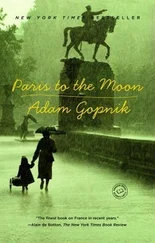For to the other explanations—Freudian and puritanical—of our food mania, we might add a French explanation: it’s a sign of civilization. Jacques Decour ended his letter this way: “It is eight o’clock. It is almost time to go. I have eaten and drunk my coffee. I think I have attended to everything.” I have attended to everything . In the end, the last ritual Decour performed was to eat his last breakfast and drink his last cup of coffee and think that he had attended to it all.
All the other questions of food condense into a single question, Jacques Decour’s question, the question of pleasure in a tragic world. “Come to the table, dinner’s ready!” the hostess says, her face alight with nervous promise, and we trot dutifully to our places, expecting little, hoping for a lot—that, sitting there, we may not improve our lives but may achieve at least our ambiguities. The brightness of life, the double nature of desire, the longings of hunger and the likings of appetite, all the table’s troubled truths… In the midst of life we are at dinner. Why? Why do we think of food at times like these? What do we think of food at times like these? How can you think about food at a time like this? It’s an old question. The indignant puritan repeats it today. Reading his last letter, we might even ask it of Jacques Decour. To find out how he once could, why we still do, is the purpose of these pages.
PART I
Coming to the Table
THE TWO pillars of modern eating are the restaurant and the recipe book. The restaurant is the place where all eating out takes place; the recipe is the thing with which all home cooking starts. Both are modern. Until the nineteenth century, big books of recipes did not exist, and there was no place to go and eat in exchange for money that was like the places we go now.
The restaurant was once a place for men, a place where men ate, held court, cooked, boasted and swaggered, and wooed women. The recipe book was traditionally “feminine”: the kitchen was the place where women cooked, supervised, gave orders, made brownies, to steady and domesticate men. In the myth-world of the nineteenth century, the restaurant existed to coax women into having sex; the recipe book to coax men into staying home.
These two poles are, blessedly, switching (moms now eat out as commonly as dads make supper), but the double pillars—less like pillars, perhaps, than like the two steeples of Chartres, parts of the same church but unlike each other—remain. To grasp the play of the table, and its politics, let us begin with those two supporting R ’s, before proceeding to treat the rituals of taste, which they both support. Begin, then, at the moment when we go to the fancy place for dinner and sit down, nerves alight, or else the moment when we come home and smell what’s cooking. Both are moments of arrival, of expectation, overseen by history. We have gone out for lunch or come home for dinner, and now we start….
1. Who Made the Restaurant?
A RESTAURANT is a place where you go to eat. You usually arrive in the early afternoon or the middle of the evening, and are taken to a table of your own in a room, usually on the ground floor of a city building in a space leased by a cook and made to look like a dining room. There are plush chairs and benches, and often mirrors. Someone, a professional go-between, often dressed in a parody of evening wear, whatever the hour, brings you a card that lists the things the cook is ready to cook, and how much it will cost to get him to cook them for you. You study this card—usually a list with decorations, sometimes bound in a leather pseudobook—and say what you’ll have, and then the go-between goes into another room, the kitchen, which you can’t see or hear or probably even smell. After a wait, the go-between brings the food you asked for. Very often, you will start with soup before having some grilled or roasted meat, followed by a sweet, almost always something made with sugar, a pudding or cake, rather than something naturally sweet, such as a plain piece of fruit. You are expected to have tea or coffee afterward, and then a bill is brought to your table. Prices are never mentioned out loud, and you pay whatever the card said you would. The place isn’t a whorehouse or anything like it, but often you take someone there because you would like to have sex with them afterward, and sometimes you do, although, if you do, you go and do it somewhere else.
All the details, from soup to sex, of this setup, which by now seems as normal as eating itself, as obvious as breathing, can be found in more or less the same form from Sydney to San Francisco. And all of them—waiters, menus, tables, mirrors, closed kitchen, seduction, and silences, even the little table in the corner, tout compris —were thought up in Paris during a twenty-five year period right before the French Revolution and in the twenty or so years after. When you consider that eating is one of the few things that humans did even before they were people, it seems strange that restaurants should be so recent, but they are—as though the idea of having sex in beds had been discovered in Berlin during the winter of 1857, and then word got around.
There were places where you could go and pay for a meal before there were restaurants, of course: the tavern, the cook-shop, the inn, the table d’hôte, the traiteur , or cook-caterer. The tavern as it evolved throughout Europe in the later part of the eighteenth century had many of the essential emotional traits of the modern restaurant. But the restaurant, with its special rituals and its particular look, began at one time and in one place.
The restaurant was known at once to be a modern and amazing thing. The great gastronome Jean Anthelme Brillat-Savarin marveled in 1825 that now “any man with three or four pistoles in his purse, can immediately, infallibly, and simply for the asking procure all the pleasures of which taste is susceptible.” Yet how resilient, many-sided, adaptable, this new thing turned out to be, defying the rule that a picnic is made for one lawn and no other! If the restaurant is not the most original of modern instances and institutions, it is surely the most tenacious. It is the primal scene of modern life. Most modern urban people mark their lives by their moments in cafés and restaurants, just as ancient people marked their time on earth by visits to the local oracle, or medieval people by pilgrimages: we are courted, spurned, recruited, hired, fired, lured to a new job, or released from an old one at a table while a waiter hovers nearby. There are few marriages that did not begin at dinner at a table leased for the evening, and few divorces that did not first show signs of approaching doom in a sigh of resentment or an eye roll of exasperation in a similar setting. (“Can’t you just make up your mind and stick with it?/Why do you always overtip?”… The “forever” sentiments of anniversary dinners out not rarely sugar over the approaching “no-mores” of domestic life.)
I love restaurants. I love them even though, after many years as a reporter spent being fully disillusioned about their behind-the-scenes—having labored once or twice in their kitchens and befriended their owners—I am aware of how brutal the work is, how long the hours are, and how, aside from the ventures of a handful of those entrepreneurs essentially indifferent to the food they serve, how tiny is the hope of profit. “Sale métier,” the cooks and waiters alike mutter in Ludwig Bemelmans’s memoirs of restaurant life in prewar Europe—“Filthy occupation”—and the muttering goes on still. Yet when I think of happy moments, I think of eating out.
Though they sometimes witness the ends of our love lives, restaurants have a ring of hope about them, a note of innocent celebration that makes them the right background for seduction. The man who asks the girl to dinner is not, after all, actually suggesting sex except by the airiest remote inference; he is pretending to be a better man than that: let’s meet, talk, try. The restaurant offers the hope of happiness that gives greedy sex the look of lighthearted love, and, in the erotic sphere as much as the eating sphere, turns raw hunger into formal appetite. The restaurant offers not seduction but what precedes seduction, the false promise of pure motives.
Читать дальше












